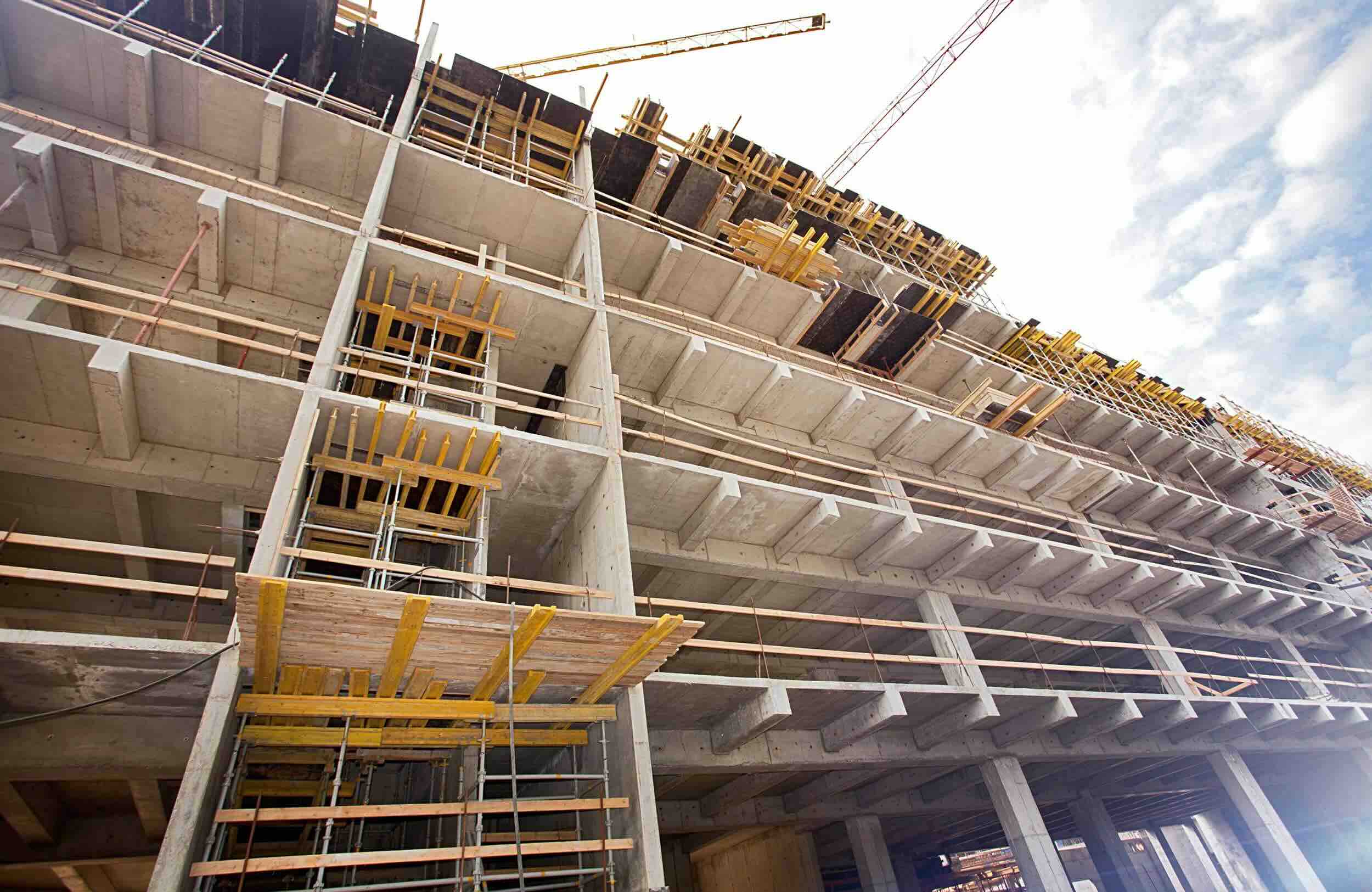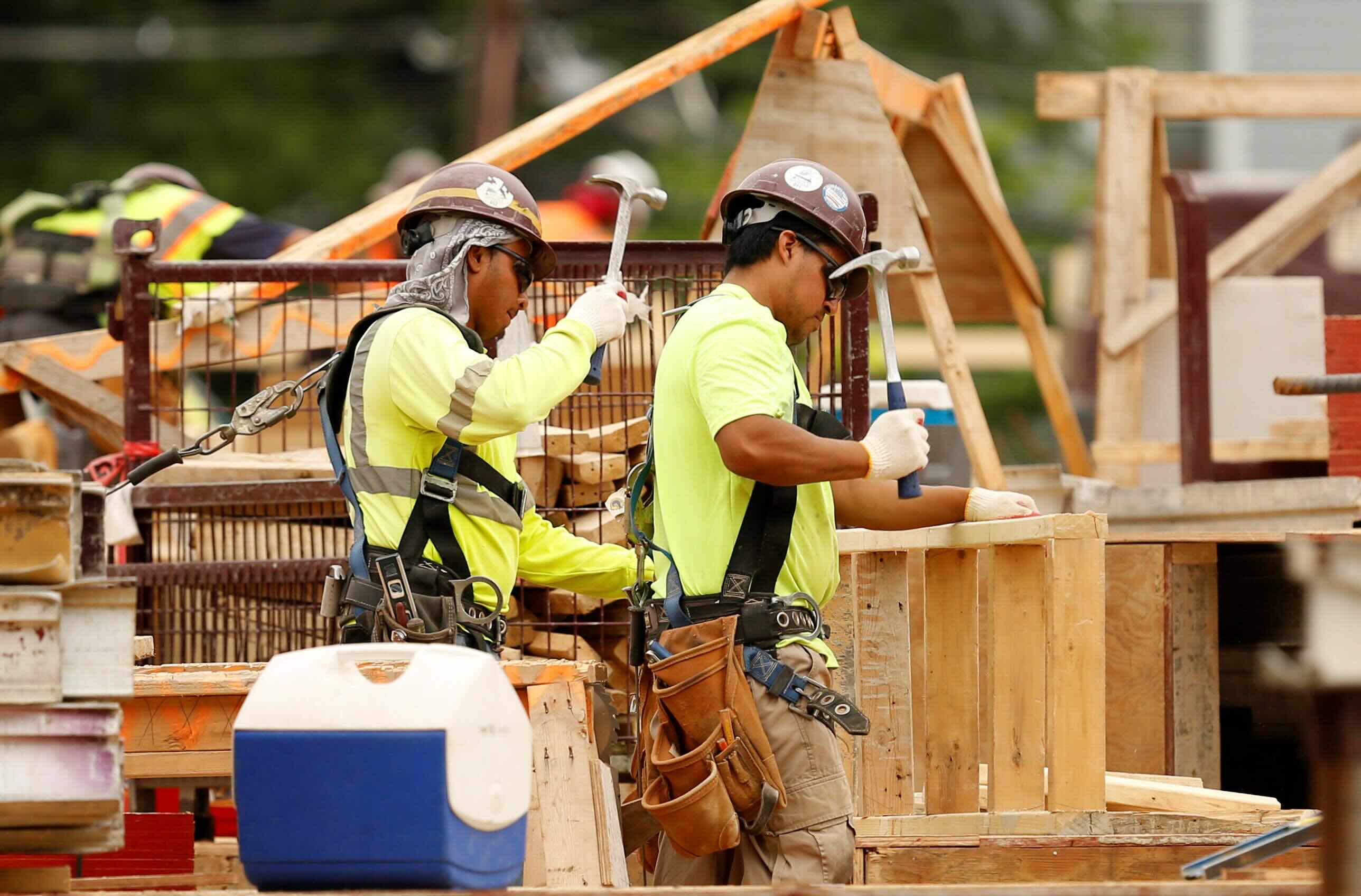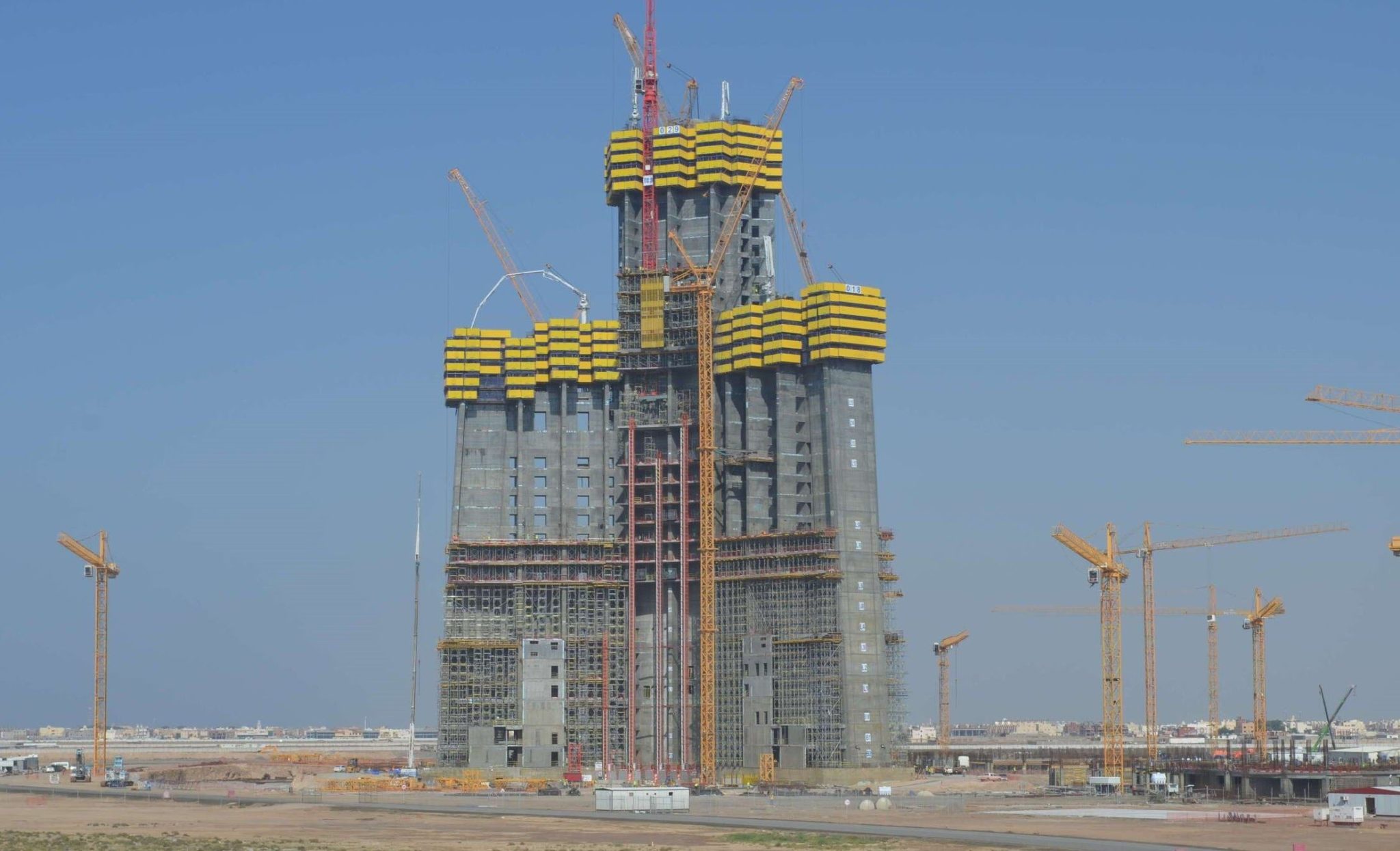Home>diy>Building & Construction>Why Construction Projects Fail


Building & Construction
Why Construction Projects Fail
Modified: January 5, 2024
Discover the common reasons why building construction projects fail and learn how to overcome them. Avoid costly mistakes and ensure project success.
(Many of the links in this article redirect to a specific reviewed product. Your purchase of these products through affiliate links helps to generate commission for Storables.com, at no extra cost. Learn more)
Introduction
Welcome to the world of construction projects, where the dreams of architects and engineers come to life. Building construction is a complex and demanding process, requiring meticulous planning, skilled labor, and efficient management. However, despite the best intentions and efforts, construction projects sometimes fail to meet expectations. In this article, we will explore the various reasons why construction projects fail and how to prevent these failures from occurring.
Construction projects, whether large-scale commercial developments or small residential builds, involve numerous stakeholders, timelines, budgets, and risks. From the initial concept to the final completion, every stage of the construction process requires precision and attention to detail. However, even with the best intentions, there are several common pitfalls that can lead to project failures.
Understanding the reasons behind construction project failures is crucial for project managers, contractors, and other industry professionals. By identifying these challenges and implementing effective strategies to mitigate them, stakeholders can increase the chances of a project’s success.
In the following sections, we will delve into the key factors that contribute to construction project failures, and offer insights on how to address these challenges effectively.
Key Takeaways:
- Proper planning, effective project management, and proactive communication are crucial to prevent construction project failures. Addressing challenges such as scope creep, budget overruns, and resource allocation can increase the likelihood of project success.
- Construction projects face diverse challenges, including regulatory compliance, unforeseen changes, and adverse weather conditions. Proactive measures, collaboration, and technology tools can mitigate these challenges and ensure successful project completion.
Read more: Why Did Google Glass Fail
Lack of Proper Planning
One of the primary reasons why construction projects fail is a lack of proper planning. Inadequate planning can lead to a host of issues that can derail a project from the very beginning. Without a clear roadmap and well-defined project goals, it becomes difficult to allocate resources, set realistic timelines, and manage expectations.
Proper planning starts with a thorough understanding of the project requirements, including the scope, budget, and desired outcomes. It involves conducting feasibility studies, assessing potential risks, and developing a comprehensive project plan. This plan should outline the step-by-step process, identify project milestones, and establish timelines for each phase of the construction project.
When planning a construction project, it is essential to consider various factors, such as site conditions, regulatory requirements, and environmental impacts. Failing to address these considerations adequately can result in costly delays, unexpected expenses, or even legal issues.
In addition to the technical aspects, planning also involves engaging stakeholders and obtaining their input. This collaborative approach helps ensure that all parties have a shared understanding of the project objectives, and provides an opportunity to address potential concerns or conflicts early on.
To prevent failures due to a lack of proper planning, project managers should invest time and effort in the initial stages of a project. This includes conducting thorough research, consulting experts, and developing a detailed project plan that aligns with the project objectives and constraints.
Regular monitoring and evaluation during the construction process are also crucial to ensure that the project stays on track. This includes tracking progress, identifying deviations from the plan, and making necessary adjustments to mitigate risks and prevent any potential failures.
By prioritizing proper planning and ensuring ongoing monitoring and evaluation, construction projects can minimize the likelihood of failure and increase the chances of successful completion.
Poor Project Management
Poor project management is another significant factor that can contribute to the failure of construction projects. Effective project management involves overseeing all aspects of the project, including planning, coordination, and control, to ensure its successful completion.
A construction project involves multiple stakeholders, from architects and engineers to contractors and subcontractors. Poor project management can result in miscommunication, delays, budget overruns, and a general lack of coordination among these stakeholders.
One of the key responsibilities of a project manager is to set clear project objectives and establish effective communication channels among team members. Without clear communication, misunderstandings can arise, critical information can be missed, and important decisions may be delayed, all of which can have a negative impact on the project’s outcome.
Additonally, project managers must be able to anticipate and mitigate potential risks and conflicts that may arise during the construction process. They need to develop contingency plans and be proactive in addressing any issues that may arise. Failure to do so can lead to project delays, disputes, and even legal complications.
Effective project management also involves proper resource allocation. This includes not only managing financial resources but also ensuring that the right personnel, equipment, and materials are available when needed. Inefficient resource allocation can result in delays and disruptions to the project timeline.
To prevent project failures due to poor management, it is essential to have highly skilled and experienced project managers in place. These individuals should possess strong leadership and communication skills, as well as the ability to make informed decisions in a dynamic construction environment.
Implementing effective project management methodologies, such as the use of project management software and tools, can also help streamline processes, enhance collaboration, and improve overall project efficiency. Regular project meetings, progress tracking, and performance evaluations are critical to ensure that the project stays on course and that any issues are addressed promptly.
Ultimately, effective project management is a cornerstone of successful construction projects. By ensuring proper coordination, communication, and resource allocation, project managers can minimize risks, overcome challenges, and deliver projects on time and within budget.
Inadequate Communication
Effective communication is vital in any construction project. Yet, inadequate communication is a common issue that can lead to project failures. Communication breakdowns can occur at various levels, including between project managers and team members, contractors and subcontractors, and even between different project stakeholders.
When communication is lacking, it can result in misunderstandings, delays, and even conflicts. Critical information may not be properly conveyed, leading to errors in execution or missed project milestones. The lack of clear communication channels can also make it challenging for stakeholders to voice their concerns or address issues as they arise.
To ensure adequate communication, project managers should establish clear lines of communication from the outset. This includes regular project meetings, written documentation, and the use of communication tools and platforms. By fostering an open and transparent environment, team members are encouraged to share updates, concerns, and ideas, fostering collaboration and problem-solving.
Furthermore, project managers should strive to be proactive in sharing information, updates, and changes with all relevant stakeholders. Timely communication of project milestones, change orders, and any emerging issues helps keep all parties well-informed and allows for appropriate decision-making. Regular progress updates and reports also provide stakeholders with a sense of the project’s status and enable them to identify any potential risks or areas that require attention.
In addition to vertical communication, horizontal communication between different teams and departments is crucial. Consolidating feedback and input from the various stakeholders can lead to better decision-making and ensure that all perspectives are considered.
Proper communication is not limited to verbal or written exchanges; visual communication also plays a significant role in the construction industry. Blueprints, drawings, and visual representations of the project can help convey complex ideas and concepts more effectively. Utilizing visual aids and technology tools can enhance communication and understanding among team members and stakeholders.
In summary, inadequate communication can have detrimental effects on construction projects. By establishing open lines of communication, utilizing appropriate communication tools, and fostering an environment of collaboration and transparency, project managers can mitigate communication challenges and increase the chances of project success.
Scope Creep
Scope creep is a phenomenon that can cause significant disruptions and failures in construction projects. It refers to the gradual and often uncontrolled expansion of a project’s scope beyond its original boundaries and objectives.
Scope creep can occur when there is a lack of clear definition and agreement on project requirements and deliverables. Clients may request additional features or changes during the construction process, and if these changes are not properly managed, they can impact the project’s timeline, budget, and overall feasibility.
One of the primary causes of scope creep is inadequate project scoping and requirements gathering. Without a thorough understanding of the project’s requirements and limitations, it becomes challenging to manage client expectations and define project boundaries. As a result, new requirements may be introduced midway through the project, leading to unforeseen delays and cost overruns.
To mitigate scope creep, it is essential to establish a well-defined project scope during the planning phase. This includes clearly documenting the project’s objectives, deliverables, and any specific limitations or exclusions. Engaging in regular and open communication with the client is also vital to manage their expectations and address any potential scope changes promptly.
Managing scope change requests requires a structured approach. Each change request should be evaluated for its impact on the project’s timeline, budget, and feasibility. It should be carefully analyzed to assess the potential risks and benefits associated with incorporating the change. If the change is determined to be necessary, it should be properly documented, and its impact on the project’s resources and schedule should be communicated to all stakeholders.
Implementing a change control process can also help prevent scope creep. This process involves reviewing and approving any proposed scope changes before they are implemented. It ensures that all changes are properly evaluated, approved, and communicated to the project team.
In summary, scope creep can have a significant impact on construction projects, leading to delays, cost overruns, and a decrease in overall project quality. By proactively defining project scope, managing client expectations, and implementing change control processes, project managers can minimize the risk of scope creep and increase the likelihood of project success.
Read more: Why Are Woodworking Pencils Flat
Budget Overruns
One of the most common and detrimental factors contributing to construction project failures is budget overruns. Budget overruns occur when the actual project expenses exceed the initially estimated budget. They can be caused by a variety of factors, including inaccurate cost estimation, poor financial management, unforeseen changes, and ineffective procurement strategies.
Accurately estimating project costs is essential to prevent budget overruns. However, this can be challenging, especially in complex construction projects with numerous variables. Inaccurate cost estimation can result in underestimating the resources required, leading to insufficient funding and subsequent delays or compromises in the project’s quality.
To mitigate budget overruns, it is crucial to conduct detailed cost assessments during the project planning phase. This involves considering factors such as labor costs, materials, equipment rentals, permits, and other project-related expenses. Engaging construction cost experts or utilizing cost estimation software can help improve the accuracy of budget projections.
Effective financial management is also vital in preventing budget overruns. This includes tracking and monitoring project expenses, comparing them to the budget, and identifying potential deviations. Regular financial reports and analysis allow project managers to take proactive measures to control costs, such as renegotiating contracts, seeking alternative suppliers, or making adjustments to project timelines.
Furthermore, unforeseen changes can significantly impact a project’s budget. These changes may be a result of design modifications, site conditions, or client requests. To mitigate the risk of budget overruns, it is essential to conduct thorough risk assessments and consider potential change orders in the initial budget planning. This can help allocate funds for any necessary adjustments that may arise.
Implementing effective procurement strategies is another key factor in preventing budget overruns. Collaborating closely with suppliers and subcontractors, negotiating favorable terms, and conducting competitive bidding can help secure the best pricing for materials and services. Additionally, maintaining transparency and open communication with the procurement team can help identify cost-saving opportunities and prevent overspending.
To summarize, budget overruns can significantly impact a construction project’s success. Accurate cost estimation, effective financial management, proactive risk assessment, and careful procurement strategies are essential in preventing budget overruns. By implementing these measures, project managers can maximize resources, minimize financial risks, and increase the chances of a successful project completion within the allocated budget.
Inefficient Resource Allocation
Efficient resource allocation is crucial for the success of any construction project. It involves allocating the right resources, including labor, equipment, materials, and finances, in the most effective and optimal manner to meet project requirements and timelines. Inefficient resource allocation can lead to delays, cost overruns, and a decrease in overall project productivity.
One of the main causes of inefficient resource allocation is a lack of proper planning and forecasting. Without a clear understanding of the project’s resource requirements, it becomes challenging to allocate resources effectively. This can result in delays in procuring materials, understaffing or overstaffing, and inefficient utilization of equipment.
To prevent inefficient resource allocation, project managers must conduct a thorough analysis of the project’s resource needs. This involves identifying the required labor skills, estimating material quantities, and assessing equipment requirements. Project managers should also consider potential resource constraints, such as availability of skilled labor, lead times for material delivery, and equipment availability.
Collaboration with key stakeholders, such as subcontractors and suppliers, is crucial to ensure efficient resource allocation. By involving suppliers early in the planning process, project managers can better understand lead times and make necessary arrangements to avoid delays. Engaging subcontractors with proven expertise and capacity can also help optimize resource allocation, ensuring that the right skills are available when needed.
Effective communication and coordination among project team members are essential for efficient resource allocation. Regular project meetings, progress updates, and communication channels enable team members to share their resource needs and address any potential bottlenecks proactively. This allows for adjustments to be made to the resource allocation plan in a timely manner.
Utilizing technology tools, such as project management software and resource management systems, can also help optimize resource allocation. These tools provide real-time visibility into resource availability and utilization, allowing project managers to make data-driven decisions and allocate resources more efficiently.
Regular monitoring and tracking of resource usage throughout the project duration is crucial to ensure that resources are being used optimally. This includes reviewing and analyzing project reports, assessing resource productivity, and making any necessary adjustments to maximize efficiency.
In summary, inefficient resource allocation can have a significant impact on construction projects, leading to delays, cost overruns, and decreased productivity. By conducting proper planning, collaborating with stakeholders, utilizing technology tools, and implementing effective communication and monitoring strategies, project managers can ensure efficient resource allocation, maximize project productivity, and increase the likelihood of project success.
Tip: Ensure clear communication and collaboration among all project stakeholders, including contractors, architects, and clients, to avoid misunderstandings and prevent project delays.
Lack of Skilled Workforce
The availability of a skilled workforce is critical for the successful execution of construction projects. However, a common challenge faced by the construction industry is the lack of skilled labor. This shortage can lead to project delays, compromised quality of work, and increased costs.
One of the main causes of the skilled workforce shortage is the increasing demand for construction projects coupled with a decline in the number of skilled workers. Many experienced construction workers have reached retirement age, and there has been a lack of younger workers entering the industry to fill the gap.
To address the issue of the lack of skilled labor, it is important for construction companies and project managers to take proactive measures. This includes investing in training and development programs to upskill existing workers and attract new talent. Apprenticeship programs and partnerships with trade schools can also help bridge the gap by providing hands-on training and education for aspiring construction workers.
Creating a positive work environment and company culture can also help in attracting and retaining skilled workers. Offering competitive wages, benefits, and opportunities for career growth and advancement can incentivize workers to stay in the industry.
Another approach to address the shortage of skilled labor is to implement innovative construction technologies and methodologies. Automation and robotics can help reduce the reliance on manual labor and improve overall project efficiency. Embracing digital tools and software can also streamline processes, enhance collaboration, and optimize resource allocation.
Collaboration with educational institutions and industry associations is crucial to develop long-term solutions for the shortage of skilled labor. By working together, construction companies can provide input on curriculum development and help shape training programs to meet industry needs. This can ensure that graduates entering the workforce are equipped with the necessary skills and knowledge.
Furthermore, fostering a diverse and inclusive workforce can help address the shortage of skilled labor. Encouraging women, minorities, and underrepresented groups to pursue careers in construction can expand the talent pool and bring valuable perspectives to the industry.
In summary, the lack of a skilled workforce poses a significant challenge to the construction industry. However, by investing in training and development programs, embracing technology, fostering a positive work environment, and collaborating with educational institutions and industry associations, construction projects can overcome this challenge and ensure a skilled workforce for the future.
Regulatory and Legal Issues
Construction projects are subject to a wide range of regulatory requirements and legal considerations. Failure to understand and comply with these regulations can result in project delays, financial penalties, and even legal disputes. Therefore, it is crucial for project managers and construction professionals to have a thorough understanding of the relevant laws and regulations that govern construction activities.
One of the major regulatory challenges in the construction industry is obtaining the necessary permits and approvals. Construction projects must adhere to zoning regulations, building codes, environmental regulations, and other local, state, and federal requirements. Failure to obtain the required permits or non-compliance with these regulations can lead to costly delays or even the suspension of the project.
Additionally, navigating the complex web of construction contracts and legal agreements is another critical aspect of managing regulatory and legal issues. Construction contracts should be carefully drafted to clearly define the rights, responsibilities, and obligations of all parties involved in the project, including clients, contractors, subcontractors, and suppliers. Failure to execute contracts properly or resolve legal disputes can result in project delays, cost overruns, and damage to professional reputations.
To effectively handle regulatory and legal issues, project managers should work closely with legal professionals who specialize in construction law. These experts can provide guidance on compliance matters, review contracts, and address any potential legal risks or disputes that may arise throughout the project’s lifecycle.
Proactive communication and collaboration with local authorities and regulatory bodies is crucial for successful project completion. By establishing strong relationships and keeping relevant parties informed, project managers can gain insights into changes in regulations or potential issues that may affect the project. Regular updates and documentation of compliance efforts can also help demonstrate the project’s adherence to regulatory requirements.
It is also essential to keep abreast of changes in legislation or regulations that may impact the construction industry. Staying informed about new laws or codes can help project managers anticipate potential compliance requirements and make necessary adjustments to project plans and budgets.
In summary, regulatory and legal issues are a significant consideration in construction projects. By understanding and complying with relevant regulations, properly drafting and executing contracts, and seeking legal guidance when needed, project managers can mitigate the risks associated with regulatory and legal challenges, ensuring successful project completion and avoiding costly penalties or disputes.
Read more: Why Construction Is Important
Unforeseen Changes in Design or Site Conditions
Unforeseen changes in design or site conditions can pose significant challenges to construction projects. These changes can arise from various factors, including design errors, unforeseen site conditions, or changes in client requirements. Failing to address these changes effectively can lead to delays, cost overruns, and compromises in the project’s quality.
One of the common causes of unforeseen changes is design errors or omissions. Despite careful planning and thorough design reviews, it is not uncommon for design errors or gaps to be discovered during the construction process. These errors may require modifications to the original design, leading to additional resources, time, and costs.
Another factor that can trigger unforeseen changes is the discovery of unforeseen site conditions. During the excavation or demolition phase, construction teams may encounter unexpected issues such as poor soil conditions, buried utilities, or hazardous materials. These discoveries may require adjustments to the construction plan, additional remediation efforts, or the need for specialized expertise.
Client requirements also play a role in unforeseen changes. Clients may change their mind about certain design features or request modifications that were not initially anticipated. These changes can have a cascading effect on the project, impacting timelines, budgets, and resource allocation.
To effectively manage unforeseen changes, communication and collaboration between project stakeholders are key. Early involvement of project managers, designers, and construction teams can help identify and assess potential risks and challenges. Holding regular project meetings that include all relevant parties allows for timely discussion and resolution of potential issues.
Flexibility in project planning and design is also important. Allowing for contingency plans and incorporating flexibility into the project schedule can help accommodate unforeseen changes without severely disrupting the project’s progress. Additionally, developing a change management process that clearly outlines the steps to evaluate, approve, and implement changes can help ensure that unforeseen changes are managed effectively.
It is also crucial to have effective document control and record-keeping practices. Maintaining accurate and up-to-date documentation of design changes, site condition discoveries, and client requests allows for better communication, accountability, and audit trails. This documentation can also be valuable in resolving disputes and claims that may arise from unforeseen changes.
In summary, unforeseen changes in design or site conditions can significantly impact construction projects. By emphasizing collaboration, implementing flexible project planning, and maintaining proper documentation and record-keeping practices, project managers can navigate these changes effectively and minimize their impact on the project’s success.
Poor Quality Control
Poor quality control is a significant factor that can lead to the failure of construction projects. Maintaining high-quality standards throughout the construction process is essential to ensure that the final product meets the required specifications, safety standards, and client expectations.
One of the primary causes of poor quality control is the lack of a comprehensive quality control plan. A well-defined plan should outline the quality standards, inspection procedures, and quality assurance processes that will be implemented throughout the project. Without a clear plan in place, it becomes difficult to monitor and measure the quality of work, leading to potential errors and defects.
Effective quality control starts with regular inspections and audits at various stages of the construction process. Inspections should be performed by qualified personnel who have the expertise to identify any deviations from the approved plans and specifications. These inspections should not only focus on the final product but also assess the quality of materials, workmanship, and adherence to safety standards throughout the construction process.
Developing robust quality control checklists and documentation is crucial for ensuring consistency and accountability. Checklists should cover all critical aspects of construction, including structural integrity, plumbing, electrical systems, finishes, and overall safety. Documenting deviations, non-compliance issues, and corrective actions taken is essential for accountability and tracking improvements.
Another key aspect of quality control is continuous training and education of construction workers. It is important to provide workers with proper training not only on the technical aspects of construction but also on quality standards, procedures, and best practices. By investing in the skills and knowledge of the workforce, construction companies can improve workmanship and reduce the likelihood of errors and defects.
Effective communication and collaboration between project stakeholders are also critical for quality control. Clear channels of communication should be established to address any potential quality concerns or issues as they arise. Collaborating with subcontractors, suppliers, and clients to enforce and maintain quality standards fosters a collective commitment to ensuring a high-quality end product.
Utilizing technology tools such as building information modeling (BIM), drones, and construction software can enhance quality control efforts. These tools can help detect errors or deviations early on, improve accuracy in measurements and documentation, and enable real-time collaboration and communication between stakeholders.
In summary, poor quality control can have significant consequences on construction projects. By implementing a comprehensive quality control plan, conducting regular inspections, providing ongoing training, fostering effective communication, and utilizing technology tools, project managers can maintain high-quality standards, minimize errors, and ensure the success of construction projects.
Delays in Material Delivery
Delays in material delivery can have a significant impact on construction projects, causing disruptions, increased costs, and potential project delays. Timely and efficient delivery of construction materials is essential to ensure smooth project progress and meet project milestones.
One of the main causes of delays in material delivery is poor supplier management. Construction projects often involve multiple suppliers and subcontractors, each responsible for delivering specific materials or components. Inadequate communication, unclear expectations, and insufficient coordination among suppliers can result in delays in material delivery.
To mitigate delays, project managers should establish clear communication channels with suppliers from the outset. This includes clearly defining project requirements, delivery timelines, and quality expectations. Regular updates and coordination meetings with suppliers can help identify any potential issues or risks that may impact material delivery.
Effective supplier management also involves conducting thorough due diligence when selecting suppliers. Assessing their reputation, reliability, and delivery track record can help ensure that they are capable of meeting the project’s requirements. Establishing strong relationships with suppliers and maintaining open lines of communication can foster a collaborative approach to problem-solving and minimize delays.
Accurate project planning and forecasting are also crucial in managing material delivery. By accurately estimating material quantities and lead times, project managers can anticipate and plan for any necessary buffer time. Building in a buffer can help account for potential delays and ensure that materials are available when needed, reducing the impact on project timelines.
Monitoring and tracking material inventory is essential to identify any potential shortages or delays early on. Utilizing inventory management systems and tracking tools can provide real-time visibility into material availability, reorder points, and delivery timelines. This enables project managers to proactively address any issues and make alternative arrangements if necessary.
Collaboration with suppliers and subcontractors can also help prevent material delivery delays. By involving suppliers in the project planning and scheduling process, project managers can gain valuable input on potential challenges or constraints. This collaboration can result in more accurate delivery timelines and better coordination between the various entities involved in the supply chain.
In summary, delays in material delivery can have a significant impact on construction projects. By adopting proactive supplier management practices, accurate project planning, effective inventory tracking, and collaboration with suppliers, project managers can minimize the risk of material delivery delays, ensuring the smooth progress of construction projects.
Adverse Weather Conditions
Adverse weather conditions pose a significant challenge in the construction industry, often causing delays, safety issues, and disruptions to project schedules. Unpredictable weather events, such as heavy rain, extreme temperatures, high winds, or snowstorms, can impact construction projects at any phase, from site preparation to finishing touches.
One of the main ways adverse weather conditions impact construction projects is through delays. Inclement weather can render construction sites unsafe or make it impossible to perform certain tasks. For example, heavy rain can cause flooding and make excavation work hazardous, or high winds can pose risks for tall structures and cranes. These delays can result in increased project timelines, additional costs, and potential contractual disputes.
To mitigate the impact of adverse weather conditions, project managers should include contingency plans in their project schedules. These plans should consider the potential weather risks in the project location and allocate additional time for weather-related delays. Regular monitoring of weather forecasts can help project managers anticipate potential disruptions and make necessary adjustments to schedules.
Furthermore, implementing proactive measures can help minimize the impact of adverse weather conditions. For instance, ensuring proper drainage systems and site grading can help prevent water accumulation during heavy rain. Installing temporary structures or using protective covers can shield construction sites from extreme temperatures or inclement weather, allowing work to continue safely.
Safety is a paramount concern when dealing with adverse weather conditions. Construction teams must follow strict safety protocols to protect workers from hazards. This may involve temporary suspension of work during severe weather events or implementing additional safety measures, such as reinforcing scaffoldings or securing construction materials to prevent damage from high winds.
Another way to manage adverse weather conditions is by enhancing on-site communication and collaboration. When weather events are anticipated, project managers should ensure that all team members are informed of any changes to the schedule and any necessary safety precautions. Effective communication allows for timely decision-making and coordination among stakeholders.
Technology tools can also assist in managing adverse weather conditions. Weather monitoring apps and real-time weather data can provide project managers with accurate and up-to-date information, helping them make informed decisions about work schedules and safety protocols. Additionally, utilizing construction management software can enable more seamless communication and collaboration among team members, regardless of their physical location.
Overall, adverse weather conditions are an unavoidable challenge in the construction industry. By preparing for potential delays, implementing safety protocols, enhancing communication, and leveraging technology tools, project managers can minimize the impact of adverse weather conditions on construction projects, ensuring successful completion and maintaining the safety of the workforce.
Read more: Why Work In Construction
Conclusion
Construction projects are complex undertakings that require meticulous planning, effective management, and the ability to navigate various challenges. However, despite the best efforts, construction projects can still encounter setbacks and failures. In this article, we have explored several key factors that contribute to construction project failures and provided insights on how to prevent and mitigate these challenges.
Lack of proper planning can be a significant factor leading to project failures. Thoroughly understanding the project requirements, conducting feasibility studies, and developing a comprehensive project plan are crucial to set the project up for success. Adequate communication and collaboration with stakeholders, along with ongoing monitoring and evaluation, are vital to ensure that the project stays on track.
Poor project management can also contribute to project failures. Proactive leadership, effective communication, efficient resource allocation, and the ability to anticipate and mitigate risks are essential for successful project execution. Implementing project management tools and methodologies can streamline processes and improve overall project efficiency.
Inadequate communication can lead to misunderstandings, delays, and conflicts. Establishing clear communication channels, fostering collaboration, and utilizing visual aids can enhance communication among team members and stakeholders, minimizing the risk of communication breakdowns.
Scope creep, budget overruns, and inefficient resource allocation can all have a detrimental impact on construction projects. Proactively managing project scope, conducting accurate cost estimation, and optimizing resource allocation are essential to prevent these challenges and ensure project success.
Construction projects are also subject to regulatory and legal requirements. Understanding and complying with these regulations, as well as ensuring proper contract management and documentation, are crucial to prevent potential legal disputes and interruptions to the project.
Unforeseen changes in design or site conditions, poor quality control, delays in material delivery, and adverse weather conditions can all disrupt project schedules and impact the project’s outcome. Implementing proactive measures, such as thorough planning, effective risk management, and collaboration with stakeholders, can help mitigate these challenges and minimize their impact on the project’s success.
In conclusion, construction projects are susceptible to a variety of challenges that can lead to failures. By addressing these challenges proactively, engaging in effective planning and communication, and implementing robust project management strategies, construction stakeholders can increase the chances of project success. Ultimately, by prioritizing proper planning, efficient management, and continuous improvement, construction projects can overcome obstacles and deliver outstanding results.
Frequently Asked Questions about Why Construction Projects Fail
Was this page helpful?
At Storables.com, we guarantee accurate and reliable information. Our content, validated by Expert Board Contributors, is crafted following stringent Editorial Policies. We're committed to providing you with well-researched, expert-backed insights for all your informational needs.













0 thoughts on “Why Construction Projects Fail”